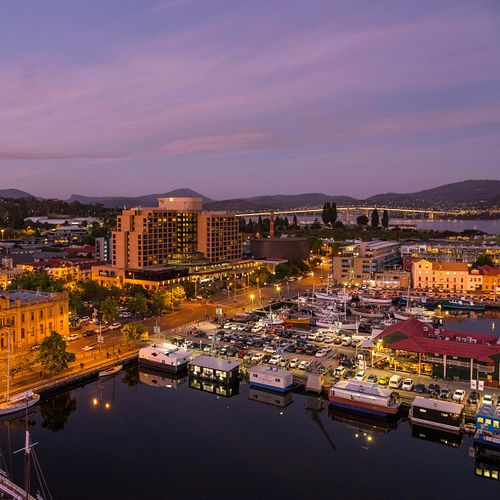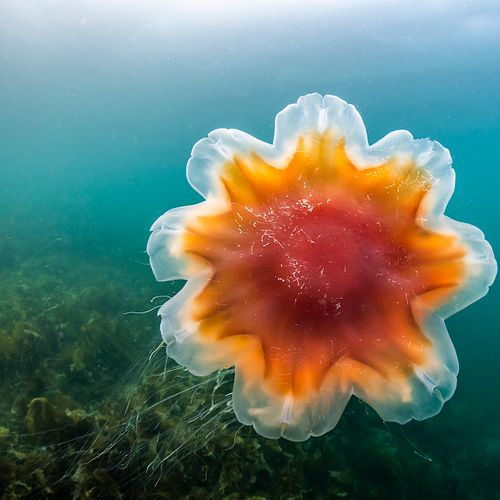15. mars 2024 nyhet
We are living in the Anthropocene. Our oceans are warmer, more acidic, more polluted with plastic and chemicals than ever, and are subjected to increasing exploitation and overfishing. Zooplankton play a pivotal role in marine systems worldwide; they graze on phytoplankton, drive carbon and nutrient cycles, and serve as prey for higher trophic level consumers including fish and iconic marine mammals and seabirds. How zooplankton respond to the dramatic changes in our marine ecosystems will impact the health and productivity of our oceans and our planet.
To better understand zooplankton in a changing world, ICES and PICES are holding the 7th International Zooplankton Production Symposium in the historic waterfront district of Hobart, Australia, from 17-22 March 2024. The forum of >350 international zooplankton experts will discuss and showcase the latest zooplankton research in a five-day face-to-face meeting in 15 scientific sessions.
Two of the sessions will be co-chaired by scientists from Akvaplan-niva, Claudia Halsband and Sanna Majaneva. Together with other zooplankton experts, the two colleagues from our section Ecosystem Understanding will coordinate Session 2 Interactions between zooplankton and pollution in a changing ocean and Session 4 Shedding new light on zooplankton: Unveiling communities, ecology, and evolution through integrated approaches, respectively. They will also evaluate student talks and posters for the best early-career presentation.
Claudia will give an invited lecture to kick off session 2: “In my review, I will summarize recent research results on the sensitivity of zooplankton to different types of pollution, including microplastics, metal contamination, and toxic organic chemicals. This will be a great opportunity to showcase my results from 10 years of microplastics research, including several collaboration projects I have coordinated at the Fram Centre, such as MARS and RubberTox.” Together with colleague Helena Reinardy from the Scottish Association for Marine Science (SAMS), Claudia also studied combined effects of elevated water temperatures and low pH, as well as copper contamination, on the DNA of two different copepod species. The results of these experiments will be presented by Reinardy and jointly supervised BSc student Nele Thomsen in Session 2.
Sanna will co-chair session 4, where new molecular, optical, and acoustic methods and technologies in zooplankton research and monitoring will be discussed. For an example from Norwegian fjords, Sanna and colleagues demonstrate how adding novel use of environmental DNA metabarcoding methods to traditional net sampling and acoustic techniques, can resolve species-specific mysteries in diel vertical migration of zooplankton and how they respond to changes in underwater light.
In Session 1 Roles of jellyfish in ecosystems, Sanna will give new insights into the population dynamics of the jellyfish Cyanea capillata, also called the lion’s mane. “These elegant creatures are beautiful and have important functions in the ecosystem,” Sanna says. “We need to learn more about their diversity, population structure and ecology to understand the drivers of their blooms. This will also help mitigate adverse effects when they form massive swarms around farmed fish in open aquaculture pens.” Kanchana Bandara, also Akvaplan-niva, is the co-author of a presentation given by Sunnje Basedow (UiT the Arctic University of Norway) at the conference. The title of this presentation is "Remote sensing of zooplankton surface patches - are we underestimating surface abundancees?"

Cyanea capillata (Photo: Erling Svensen)
Another timely and interesting topic Sanna will talk about in Hobart are the changing marine light regimes in the Arctic (Session 10 Zooplankton in changing polar oceans). “The underwater light climate is undergoing significant changes, including an increase in artificial light from human activities. This alteration in light conditions can disrupt the finely tuned biological rhythms of marine organisms, which have evolved under predictable natural light regimes.,” Sanna explains, “We have used a wide range of methods to study how natural light and changes in the lightscape affect Arctic zooplankton. By combining traditional sampling techniques with advanced eDNA and behavioral experiments, we have found that different zooplankton species have unique responses to light. This suggests that considering species-specific light requirements is crucial for understanding how environmental changes impact Arctic zooplankton.”
Prior to the symposium, both Sanna and Claudia will attend a workshop on zooplankton trait data and how these can be more easily collected and shared by researchers worldwide with the help of online databases.
The hard brain work will be interspersed with networking during a local plankton art exhibit, the symposium dinner, and excursions to wildlife sanctuaries and cultural sites around Hobart. Who will spot a wild platypus first?!
Links:
https://meetings.pices.int/meetings/international/2024/zps7/scope
https://meetings.pices.int/meetings/international/2024/zps7/program#s2
https://meetings.pices.int/meetings/international/2024/zps7/program#s4


